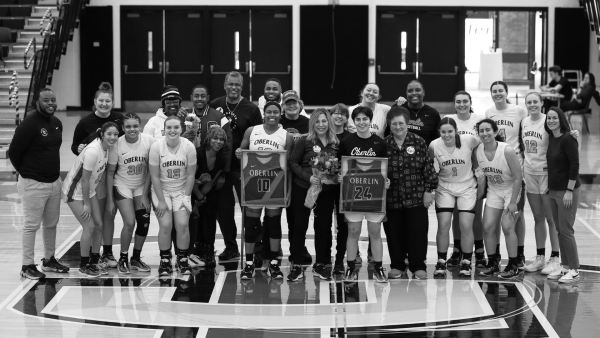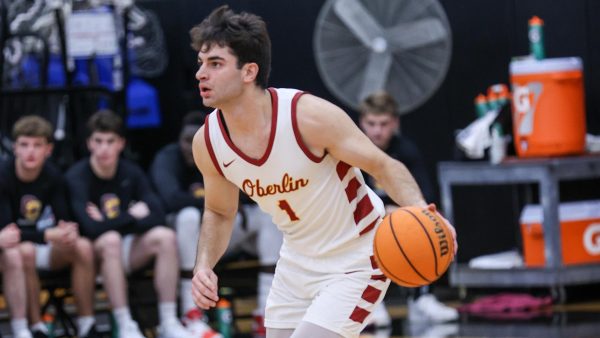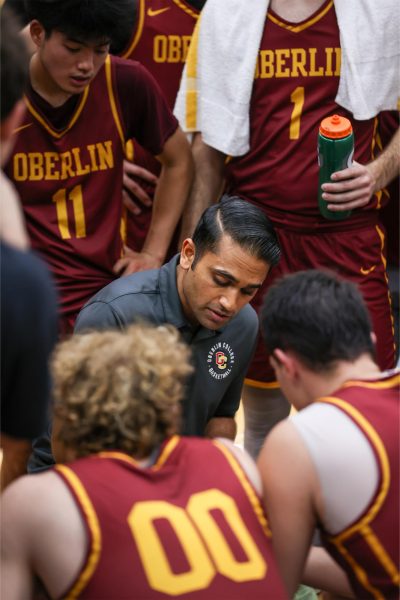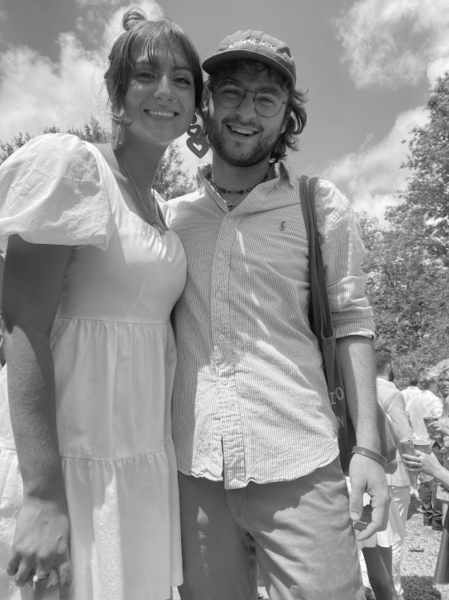52 Years Later: Remembering Oberlin’s March Madness Moment
During March, college basketball grabs the attention of the entire American sports world. From the Division I NCAA tournament to smaller conference tournaments, this time of year seems to produce an unlikely number of dramatic games and underdog stories. Fifty-two years ago, Oberlin College men’s basketball team completed a March Madness Cinderella story of their own when they won the Ohio Athletic Conference tournament against all odds. The run was also marked by evolving racial dynamics on campus and the United States as a whole.
At the heart of the OAC championship team were two fourth-years, Al Wellington — who passed away in 2012— and Randy Miller, OC ’70. They detailed the historic run in their book Oberlin Fever, A Championship Spirit in Black and White. Wellington, who was Black and grew up in the small, housing segregated town of McDonald, Ohio, came from a very different background than Miller, who is white and raised by a minister in Rochester, New York. However, the two were placed as roommates during their first year at the College, and despite differences in their upbringings and personalities, formed a bond that would be key to the basketball team’s success four years later.
Wellington and Miller noted in their book that while Oberlin was a campus known for racial acceptance, Black and white students rarely associated outside of class. They also discussed how differing views on campus of how to address racial issues divided students. The authors expressed a belief that sports teams could serve not just as an opportunity to integrate but as a chance to encourage friendships between Black and white students.
In the college basketball world at the time, integration was reshaping the game. For example, in 1966, Texas Western College — now the University of Texas at El Paso — won the NCAA tournament the year they became the first team in collegiate basketball history to play an all- Black starting five. Within the OAC in 1970, the Oberlin men’s basketball team, with Wellington and Miller as co-captains, set a standard of integrated athletics in the conferences with 5 of their 12 players being Black. The other 13 teams had a total of 14 Black players between them.
Wellington believed the squad’s racial diversity brought a spark to the team’s play.
“What Black students and players brought to Oberlin was an entirely different experience related to sports, and basketball in particular,” Wellington wrote in Oberlin Fever.
Wellington also detailed how the representation of Black athletes drew interest from Black community members, who were often a part of packed crowds watching the team during their OAC championship season. He believed the support of fans gave the team a significant advantage.
Before the raucous Oberlin crowds of the 1970 season, the Yeomen secured a 12–6 record and were poised for success as the No. 2 seed in the seven-team Northern Division section of the OAC tournament. In the first two rounds of the tournament, Oberlin coasted to double-digit wins over the University of Mount Union and Heidelberg University, then known as Heidelberg College. They then beat The College of Wooster by nine to win the Northern Division title. This set up an OAC championship matchup against Wittenberg University, whom Oberlin had not
beaten in 18 years. Not only did Oberlin have a history of losing to them, but Wittenberg was also on a 16-game winning streak going into the championship that season.
It was estimated that around 1,500 Oberlin supporters showed up to the game at Baldwin Wallace University to cheer on the Yeomen, greatly outnumbering Wittenberg fans. In front of the fired-up crowd, Oberlin jumped to an early lead and held it the whole game despite Wittenberg cutting it close at times. Wellington and Miller played key roles in the victory, with Wellington leading scorers with 26 points and Miller leading the game in rebounds with nine.
The excitement over the win extended back to Oberlin where fans gathered at Tappan Square to continue the celebration. The festivities were well documented in a March 1970 edition of the Review.
“The win touched off perhaps the wildest athletic victory celebration in College history,” the Review reads. “A prolonged and insistent din of horns began to arise over usually placid Tappan Square shortly after the advance guard of returnees from B-W pulled into town, and it grew steadily into a tumultuous uproar.”
Unfortunately for Oberlin, the OAC tournament extended past the NCAA’s deadline for naming participants of the NCAA tournament, so it would be Capital University, the OAC regular season champion, that would play in the national tournament that year.
The greater significance of the championship team was documented by Wellington and Miller, who believe their win gave the Oberlin campus, which became politically and racially fractured during the late 1960s, something to unite over.






